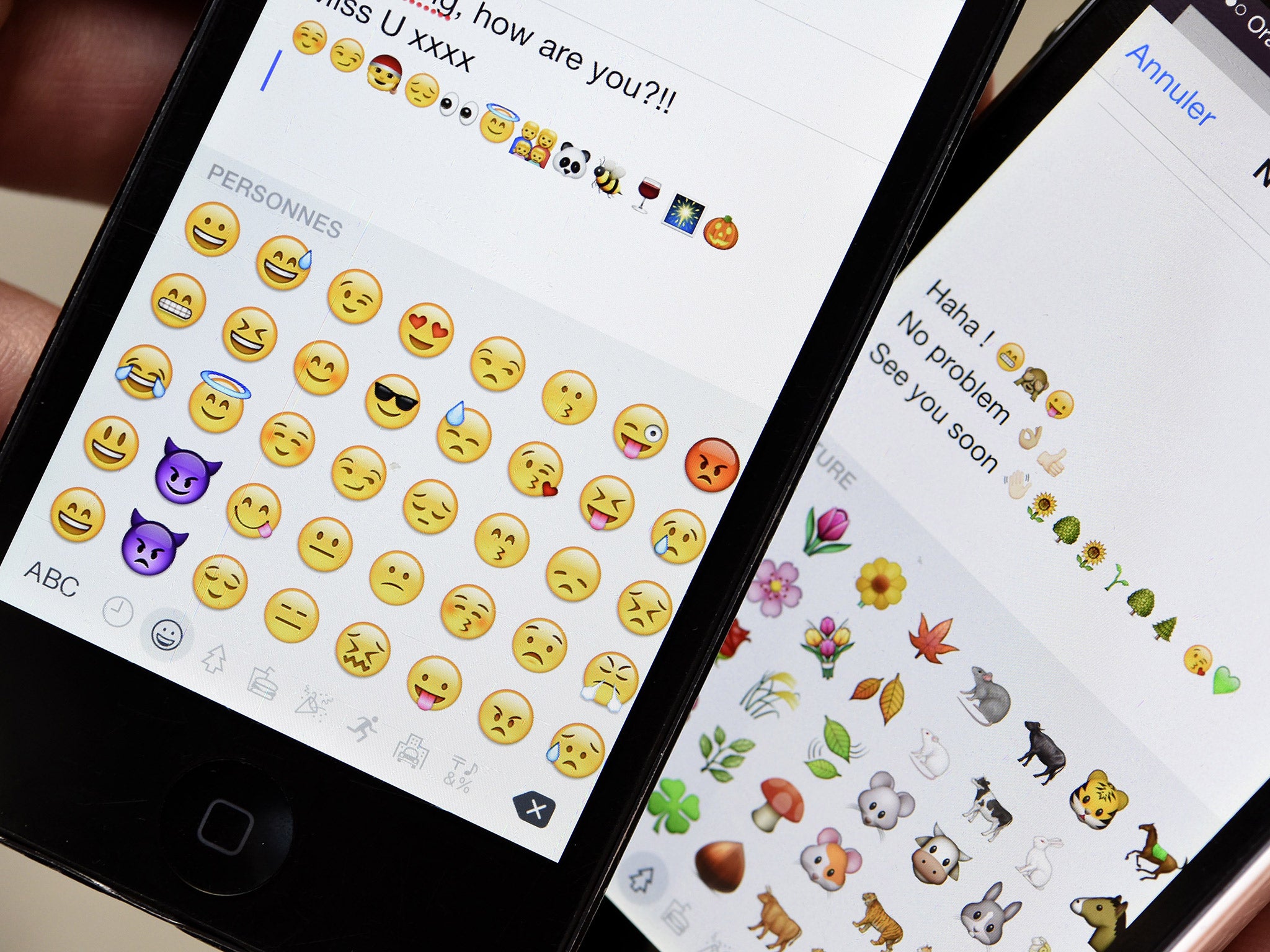World Emoji Day: Meet the man whose life's work is cataloguing emoji
Emojipedia’s Jeremy Burge is the world’s pre-eminent emoji specialist – and it’s a more serious job than you might think

Your support helps us to tell the story
From reproductive rights to climate change to Big Tech, The Independent is on the ground when the story is developing. Whether it's investigating the financials of Elon Musk's pro-Trump PAC or producing our latest documentary, 'The A Word', which shines a light on the American women fighting for reproductive rights, we know how important it is to parse out the facts from the messaging.
At such a critical moment in US history, we need reporters on the ground. Your donation allows us to keep sending journalists to speak to both sides of the story.
The Independent is trusted by Americans across the entire political spectrum. And unlike many other quality news outlets, we choose not to lock Americans out of our reporting and analysis with paywalls. We believe quality journalism should be available to everyone, paid for by those who can afford it.
Your support makes all the difference.Language is undergoing perhaps one of its biggest ever shifts, under the influence of strange yellow cartoons. And one man has made it his mission to catalogue and celebrate that fact – all on one day.
It is World Emoji Day. And it is largely the work of one man, Jeremy Burge, who works to catalogue emoji, as well as their history and meaning, on his website Emojipedia.
17 July was a natural and slightly cheeky choice of date: it’s what’s depicted on the calendar from the calendar emoji.
From there came a World Emoji Day Twitter account, but there was no official plan. “It basically consisted of me writing that 17 July would be World Emoji Day,” says Mr Burge, “there were no formal plans put in place”.
But it quickly took off: people were posting huge amounts of emoji, and quickly brands started jumping on board. Companies including Sony ran competitions.
That first year wasn’t huge “but it felt pretty significant that people were tweeting”, says Mr Burge.
It was last year, 2015, that it felt like something had really changed. People had seen the day the year before and seemed to have decided to commit to it.
“I saw people had emoji parties, at a lot of office, people were having emoji themed days,” says Mr Burge. They were wearing emoji merchandise to work, and Pepsi had special bottles that had emoji on them – one of which appeared to millions of followers on Neil Patrick Harris’s Instagram.
Reddit changed its logo – seen by over a million people a day – to include an emoji, and the British Museum tweeted pictures of things in its collection that are also depicted in emoji.
In the wake of the huge amount of interest in the day, is Mr Burge afraid that World Emoji Day is going to be ruined by commercialisation?
He says he isn’t worried. “It’s inevitable that brands jump on board with whatever’s popular,” he said.
“I don’t think it’s an issue for World Emoji Day - if you want to celebrate by sending loads of emoji to friends, that’s fine. You don’t have to look at the brands.”
Much of the excitement has been in the real world, away from places that brands can infiltrate, even if they will inevitably get on board. There’s a World Emoji Day run in Portsmouth, for instance, and a special exhibition in New York.
It made sense that the day began huge, though, given the growth of emoji themselves. Around the first Emoji day, Emojipedia got around a million bag e views a month – by the time of last year’s, that number was at 5 million.
This year that number has grown hugely again.
Mr Burge started Emojedia in the middle of 2014. At that time, he said, there weren’t many resources online for Emoji, and no real way of finding out new characters that had come in an update.
“That’s what prompted me to start it – I got an update in 2012 and noticed there was a donut.”
From there, the name Emojipedia seemed obvious, and Mr Burge was encouraged by the fact that nobody had yet registered it as a domain name.
It began as just a side project – a list of the available emoji. That gradually expanded into descriptions and information about each character, and now has expanded into a small team.
With that growth has come an increasing recognition of the responsibility that comes with documenting what’s probably the fastest-growing language in the world.
“The first Emojipedia was a bit tongue in cheek,” says Mr Burge. “I had the official descriptions – it seemed useful but a bit of fun.
“Within a year or so, I turned that around. I’m aware that millions of people use it as a resource, so it has to be accurate. We have to make sure that we’re getting it right.”
Join our commenting forum
Join thought-provoking conversations, follow other Independent readers and see their replies
Comments